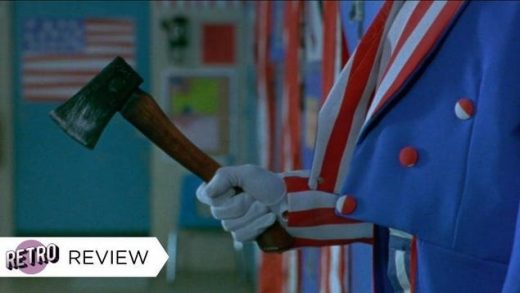“And you can call me an egomaniac, megalomaniac, or whatever you wish, with a messianic complex. I don’t have any complex, honey. I happen to know I’m the messiah.”
—Rev. Jim Jones, FBI Tape Q1059-1
“There’s a Starman, waiting in the sky/He’d like to come and meet us/But he thinks he’d blow our minds.”
—David Bowie
Philadelphia, once the second-largest city in the British Empire, was now the capital of these newly united states when the French diplomat and marquis François Barbé-Marbois attended a curious event held at the Fourth Street Methodist Church in 1782. Freshly arrived in the capital was a person born to middling stock in Cuthbert, R.I., and christened as Jemima Wilkinson, but who had since becoming possessed with the spirit of Jesus Christ in October of that revolutionary year of 1776 been known as “The Comforter,” “Friend of Sinners, “The All-Friend,” and most commonly as “Public Universal Friend,” subsequently wearing only masculine garments and answering only to male pronouns. Such is the description of the All-Friend as given by Adam Morris in American Messiahs: False Prophets of a Damned Nation, where the “dark beauty of the Comforter’s androgynous countenance” appeared as a “well-apportioned female body cloaked in black robes along with a white or purple cravat, topped by a wide-brimmed hat made of gray beaver fur.” Reflecting back on the theophany that was responsible for his adoption of the spirit of Christ, the Public Universal Friend wrote about how the “heavens were open’d And She saw too [sic] Archangels descending from the east, with golden crowns upon there heads, clothed in long white Robes, down to their feet.”
Even though the Quakers, with their reliance on revelation imparted from an “Inner Light,” were already a progressive (and suspect) denomination, heresy such as All-Friend’s earned his rebuke and excommunication from the church of his childhood. But that was of no accordance, as the Public Universal Friend would begin a remarkably successful campaign of evangelization across war-torn New England. Preaching a radical gospel that emphasized gender equality and communalism, All-Friend was the leader of an emerging religious movement and a citizen of the new Republic when he arrived at the very heart of Quakerism that was Philadelphia, where he hoped to convert multitudes towards this new messianic faith.
Barbé-Marbois was excited to see the new transgendered messiah, writing that “Jemima Wilkinson has just arrived here…Some religious denomination awaited her with apprehension, others with extreme impatience. Her story is so odd, her dogmas so new, that she has not failed to attract general attention.” All-Friend was not impressed by rank or pedigree, however, and having been tipped off to the presence of the marquise among the congregation, he preceded to castigate Barbé-Marbois, declaring that “Do these strangers believe that their presence in the house of the Lord flatter me? I disdain their honors, I scorn greatness and good fortune.” For all of the All-Friend’s anger at the presence of this sinner in his temple, Barbé-Marbois was still charmed by the messiah, writing of how All-Friend “has chosen a rather beautiful body for its dwelling…beautiful features, a fine mouth, and animated eyes,” adding that his “travels have tanned her a little.” Though he also notes that they “would have burned her in Spain and Portugal.”
Such is the sort of spectacular story that readers will find in Morris’s deeply research, well-argued, exhaustive, and fascinating new book. A San Francisco-based translator and freelance journalist whose work has appeared in The Believer, The Los Angeles Review of Books, and Salon, Morris’s first book provides a counter-history of a shadow America whose importance and influence are none-the-less for its oddity. In a narrative that stretches from the All-Friend and his heterodox preaching as the last embers of the First Great Awakening died out, through case-studies that include the 19th-century Spiritualist messiahs of Thomas Lake Harris and Cyrus Teed (the later known to his followers as “Koresh” after the Persian king in the Hebrew Scriptures); the massive real-estate empire of Harlem-based Father Divine and his racially egalitarian Peace Mission; and finally the dashed promise and horror of Jim Jones and the massacre of the Peoples Temple Agricultural Project at Jonestown, Guyana in 1978, which took 900 lives and was the most brutal religiously based murder in American history until 9/11. Morris doesn’t just collect these figures at random, he argues that “a direct lineage connects Anne Lee, the Shaker messiah who arrived to American shores in 1774, to Jim Jones, the holy-rolling Marxist,” making his claim based not just on similar ideological affinities but often times with evidence of direct historical contact as well, a chain of messianic influences starting at the very origin of the nation and functioning as a subversive counter-melody to the twin American idols of the market and evangelicalism.
Often dismissively rejected as “cult leaders,” these disparate figures, Morris argues, are better understood as the founders of new religions, unusual though they may seem to us. In this contention, Morris draws on a generation of religious studies scholars who’ve long chafed at the analytical inexactitude of the claim that some groups are simply “cults” composed of easily brain-washed followers and paranoid charlatan leaders with baroque metaphysical claims; a sentiment that was understandable after the horror of Jonestown, but which neglects the full complexities and diversity of religion as a site for human meaning. America has had no shortage of groups, both malicious and benign, that sought to spiritually transform the world, and denounce the excesses and immoralities of American culture, while sometimes surpassing them and embracing convoluted theological claims.
In new religious movements there is a necessary radical critique of inequity and injustice; as Jonestown survivor Laura Kohl recalls, the utopian impulse that motivated the Peoples’ Temple was originally “at the very cutting edge of the way we wanted society to evolve. So we wanted to be totally integrated and we wanted to have people of every socio-economic level, every racial background, everything, all included under one roof.” When their experiment began, people like Kohl couldn’t anticipate that it would end with mass suicide instigated by an increasingly paranoid amphetamine addict, because in the beginning “we were trying to be role models of a society, of a culture that was totally inclusive and not discriminatory based on education or race or socio-economic level. We all joined with that in mind.”
Such is the inevitable tragedy of messianism—it requires a messiah. Whatever the idealistic import of their motivations, members of such groups turned their hopes, expectations, and faith towards a leader who inevitably would begin to fashion himself or herself as a savior. Whether you slur them as “cults,” or soberly refer to them as “new religions,” such groups stalk the American story, calling to mind not just industrious Shakers making their immaculate wooden furniture in the 19th century, but also Bhagwan Shree Rajneesh looking positively beatified in his follower-funded Mercedes Benz, Marshall Applewhite dead in his Nikes awaiting the Hale Bop Comet to shepherd Heaven’s Gate to astral realms, and David Koresh immolated with 75 of his fellow Branch Davidians after an eight-week standoff with the FBI and the ATF.
While it would be a mistake to obscure the latent (and sometimes not-so-latent) darkness that can lay at the core of some of these groups—the exploitation, megalomania, and extremism—Morris convincingly argues that simply rejecting such groups as cults does no service to understanding them. This sentiment, that some religions are legitimate while others are irretrievably “cults,” is often mouthed by so-called “deprogrammers,” frequently representatives of evangelical Christian denominations or sham psychologists whose charlatanry could compete with that of the founders of these new faiths themselves. Morris claims that part of what’s so threatening about the figures he investigates, and not other equally controlling phenomena from Opus Dei to the Fellowship, is that unlike those groups, leaders like Ann Lee, Father Divine, and even Jones provided a “viable alternative to the alienation of secularized industrial urbanism, and a politico-spiritual antidote to the anodyne mainline Protestantism that increasingly served as a handmaiden to big business.”
For Morris, such figures and groups are genuinely countercultural, and for all of their oftentimes tragic failings, they’ve provided the only genuine resistance to the forward march of capitalism in American history. These groups are seen as dangerous in a way that Opus Dei and the Fellowship aren’t because they so fully interrogate the basic structures of our society in a manner that those more accepted cults don’t, in part because those mainstream groups exist precisely to uphold the ruling class. As Teed wrote, “Christianity… is but the dead carcass of a once vital and active structure. It will rest supine till the birds of prey, the vultures and cormorants of what is falsely called liberalism have picked its bones of its fleshly covering leaving them to dry to bleach and decompose.”
“Far more than their heretical beliefs,” Morris writes, it is the “communistic and anti-family leanings of American messianic movements [that] pose a threat to the prevailing socio-economic order.” Lee may have thought that she was the feminine vessel for the indwelling presence of Christ, but she also rejected the speculation-based industrialization wreaking havoc on the American countryside; Teed believed that the Earth was hollow and that we lived in its interior, but he also penned cognoscente denunciations of Gilded Age capitalism, and modeled ways of organizing cooperative communities that didn’t rely on big business; Father Divine implied that he ascended bodily from heaven, but he also built a communally owned empire that included some of the first integrated businesses and hotels in the United States; and Jones claimed that he was variously the reincarnation of the Pharaoh Akhenaten, the Buddha, Christ, and Vladimir Lenin, but he was also a staunch fighter against segregation and he and his wife were the first Indiana couple to adopt an African-American child. Such inconsistencies don’t invalidate these figures legitimate beliefs, but they make the ultimate conclusion of how many of these movements all the more tragic because of them.
Though not expressly stated this way by Morris, there is a sense in American Messiahs that the titular figures are both the most and least American of us. The least because they embrace a utopian communism anathema to the national character, and the most because what could be more boot-strapping in its rugged individualism than declaring yourself to be a god? Such are the paradoxes inherent in a commune run by a king (or queen). These new religions steadfastly reject the cutthroat avarice that defines American business in favor of a subversive collectivism. At the center of the social theory and economics of every group, from the Universal Friends to the Peoples’ Temple, is a model of communal living, with Morris writing that such organization “represents the ultimate repudiation of the values and institutions that Americans historically hold dear: it rejects not only the sacrosanct individualism on which American culture thrives, but also the nuclear family unit that evolved alongside industrial capitalism.”
In this way, whether in a Shaker commune or one of Father Divine’s Peace Missions, the intentional community offers “an escape from the degrading alienation of capitalist society by returning—once more—to cooperative and associative modes of living modeled by the apostolic church.” But at the same time, there is the inegalitarian contradiction of allowing a woman or man to be preeminent among the rest, to fashion themselves as a messiah, as a type of absolute CEO of the soul. Such is the marriage of the least American of collectivisms combined with a rugged individualism pushed to the breaking point. And so, America is the land of divine contradictions, for as Harris wrote in his manifesto Brotherhood of the New Life “I have sought to fold the genius of Christianity, to fathom its divine import, and to embody its principles in the spirit and body of our own America.”
Despite the antinomian excesses of theses messiahs, Morris is correct in his argument that the social and economic collectivism promoted and explored by such groups are among the most successful instances of socialism in the United States. A vibrant radical left in America has always been under attack by both capital and the government, so that enduring instances of socialism more often find themselves in a religious context than in a secular one, as failed communes from Brook Farm to Fruitland can attest to. Additionally, because it was the reform-minded French sociologist “Charles Fourier, rather than Karl Marx, who set the agenda of socialist reform in antebellum America,” as Morris writes, there was never the opportunity for a working-class, secular communist party to develop in the United States as it did in Europe. Into that void came sects and denominations that drew freely from America’s religious diversity, marrying Great Awakening evangelism to early modern occultism and 19th-century spiritualism so as to develop heterodox new faiths that often cannily and successfully questioned the status quo; what Morris describes as a “nonsectarian, ecumenical Christian church rebuilt around Christian principles of social justice [that] could be an instrument of radical social reform.”
And though their struggles for racial, gender, and class egalitarianism are often forgotten, Morris does the important job of resuscitating an understanding of how groups from the Shakers to Teed’s Koreshan Unity functioned as vanguards for progressive ideals that altered the country for the better. In ways that are both surprising and crucial to remember, such groups were often decades, if not centuries, ahead of their fellow Americans in embracing the axiom that all people are created equal, and in goading the nation to live up to its highest ideals, while demonstrating the efficacy of religious movements to effect social change and to demonstrate that there are alternative ways to structure our communities. After all, it was in the 18th century that Shakers taught a form of nascent feminism and LGBTQ equality, with their founder Mother Ann Lee publicly praying to “God, Our Mother and Father.”
In groups like the Shakers and the Society of Universal Friends there was an “incipient feminism, which continued to develop” and that defined American messianism over the centuries in the attraction of a “predominantly female following often through promises of equal rights among the faithful.” Women were able to find leadership positions that existed nowhere else in American society at the time, and they also would be emancipated from mandated domestic drudgery and abuse, allowing them an almost unparalleled freedom. As Morris notes, “For the tens of thousands of Americans who attended [these revivals], it was likely the first time any had ever seen a woman permitted to stand at a public lectern.” To read the radicalism of such a spectacle as mere performance, or to ignore their subversive language as simple rhetoric, is to deny that which is transgressive, and perhaps even redemptive, in figures otherwise marginalized in our official histories. An 18th-century church acknowledges the evils of misogyny, and made its rectification one of its chief goals. Nineteenth-century new religions denounced institutional racism from the pulpit long before emancipation. There is admittedly something odd in Spiritualist churches holding seances where the spirits of Thomas Jefferson and George Washington would possess mediums and speak to the assembled, but the fact that those founders then “tended to express regret for their participation in the slave economy, and advanced that a more temperate and egalitarian society would ease the heavenward path of American Christians” isn’t just an attempt at rationalization or absolution, but an acknowledgement of deep historical malignancies in our society that people still have trouble understanding today.
Regarding America’s shameful history of racial inequality, many of these so-called messiahs were often far ahead of conventional politics as well. Father Divine’s Peace Missions are an illustrative example. Possibly born to former slaves in Rockville, Md., and christened George Baker Jr., the man who would come to be called Father Divine studied the emerging loose movement known as “New Thought” and developed his own metaphysics grounded in egalitarianism and the same adoptionist heresy that other pseudo-messiahs had embraced, namely that it was possible to be infused with the spirit of Christ in a way that made you equivalent to Christ. Furthermore, as radical as it was to see a woman preaching, it was just as subversive for Americans to imagine Christ as a black man, but Father Divine’s mission was suffused with the belief that “if God first chose to dwell among a people dispossessed of their land and subject to the diktats of a sinful empire, it was logical for him to return as an African American in the twentieth century.”
Morris explains that it was Father Divine’s contention, as well as that of the other messiahs, that “Such a church might rescue the nation from its spiritual stagnation and the corresponding failure to live up to its democratic ideals.” At the height of the Great Depression, Father Divine built a racially integrated fellowship in a series of communally owned Peace Missions that supplied employment and dignity to thousands of followers, composed of “black and white, rich and poor, illiterate and educated.” His political platform, which he agitated for in circles that included New York City Republican (and sometimes Socialist) mayor Fiorello LaGuardia, as well as President Franklin Delano Roosevelt, included laws requiring insurance, caps on union dues, the abolition of the death penalty, banning of assault weapons, and the repeal of racially discriminatory laws. Even while Morris’s claim that “Father Divine was the most well-known and influential civil rights leader on the national stage between the deportation of Marcus Garvey and the emergence of Martin Luther King Jr.” might need a bit more exposition to be convincing, he does make his case that this enigmatic and iconoclastic figure deserves far more attention and credit than he’s been given.
At times American Messiahs can suffer a bit from its own enthusiasm. It’s always an engaging read, but Morris’s claims can occasionally be a bit too sweeping. After reading quotations from pseudo-messiahs like Teed’s, when he writes that “The universe, is an alchemico-organic dynamo… Its general form is that of the perfect egg or shell, with its central vitellus at or near the center of the sphere,” such exhaustive litanies become exhausting, because strange cosmologies are, well, strange. When you read about the course of study at Teed’s College of Life, where for $50 participants could learn “analogical biology and analogical physiology, disciplines that taught the ‘laws of universal form,’” you can’t help but wish that just a smidgen more cynicism was expressed on Morris’s part. There is an admirability that Morris takes such figures on their own accord, but it’s hard to not approach them with some skepticism. When it comes to hucksters claiming to be possessed by the indwelling presence of God, it’s difficult not to declare that sometimes a crank is a crank is a crank, and a nutcase by any other name would still smell of bullshit.
Still, Morris’s argument that we have to understand the messiahs as instances of often stunningly successful countercultural critique of American greed and inequity is crucial, and he’s right that we forget those lessons at our own peril. If we only read Teed for his bizarre anti-Copernican cosmology positing that we live within the Earth itself, but we forget that he also said that the “question for the people of to-day to consider is that of bread and butter. It must henceforth be a battle to the death between organized labor and organized capital,” than we forget the crucial left role that such groups have often played in American history. Even more important is the comprehension that such groups supplied a potent vocabulary, a sacred rhetoric that often spoke to people and that conceived of the political problems we face in a manner more astute and moving than simple secular analysis did. It’s not incidental that from the Shakers to the Amish, when it comes to successful counter-cultures, it’s the religious rather than the secular communes that endure. When Father Divine’s follower who went by the name John Lamb said that “The philosophies of men…were inadequate to cope with humanity’s problems,” he’s wisely speaking a truth just as accurate today as during the Great Depression when “clouds of tyranny” were wafting in from Europe. Say what you will about Morris’s messiahs, they were often woman and men who understood the score, and posed a solution to those problems regardless of how heterodox we may have found their methods.
Morris writes that “The American messianic impulse is based on a fundamentally irrefutable truth first observed by the Puritans: the injustices of capitalist culture cannot be reformed from within.” You can bracket out your theories of a hollow Earth and your spirit medium seances, but that above observation is the only one worth remembering. A profound lesson to be learned from the example of the women and men who most steadfastly lived in opposition to those idols of American culture. And yet, we can’t forget where the excesses of such opposition can sometimes lead—it’s hard not to wash the taste of the poisoned Kool-Aid of Jonestown from our mouths. With such a tragic impasse, what are those of us who wish there were utopias supposed to do? The great failure of these egalitarian experiments is that they paradoxically ended up enshrining a figure above the rest, that in rejecting American individualism they strangely embraced it in its purest and most noxious forms. If we can all look into those stark, foreboding mirror sunglasses favored by Jim Jones to conceal his drug-addled and bloodshot eyes, I don’t wonder if what we see isn’t our own reflections staring back at us, for good and ill. Perhaps there is an answer in that, for in that reflection we can see not just one man, but rather a whole multitude. What’s needed, if possible, is a messianism without a messiah.
The post From Father Divine to Jim Jones: On the Phenomenon of American Messiahs appeared first on The Millions.
Source : From Father Divine to Jim Jones: On the Phenomenon of American Messiahs













